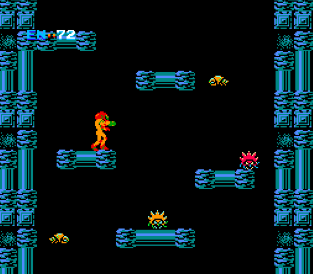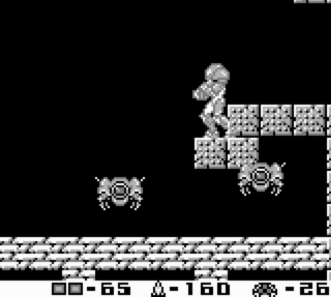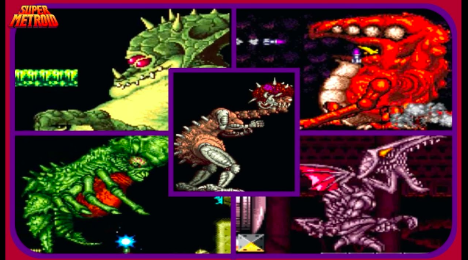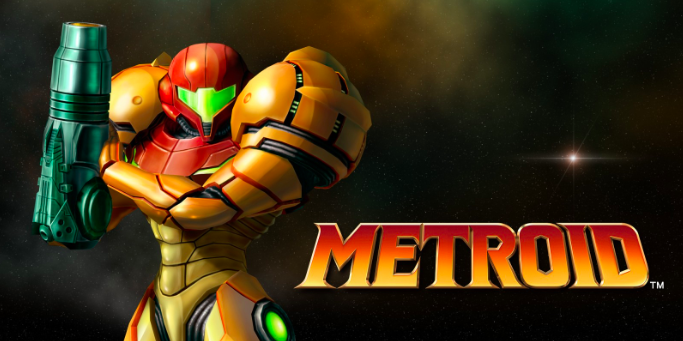Classic Metroid Games and Fear
February 24, 2020
Art is known to be able to evoke emotions in those who view it. Whether it be happiness, sadness, or laughter, the tone of the piece is purposely and masterfully set by the person who creates the art. Video games are undoubtedly a form of art and expression, and they can create emotions just as well as any other piece of media out there. Today, we will explore the emotions that the classic Nintendo series Metroid brings out in its players.
The Metroid series had its debut in the 1980s, and it follows the adventures of a space bounty hunter named Samus Aran. Samus uses her powerful armor and blaster in order to hunt down space pirates who fill the galaxy with crime. For those of you who do not know, Samus is, in fact, female, something that was incredibly surprising and uncommon for a game of that era. Regardless, the Metroid games have Samus going to different planets in order to hunt down the pirates and to stop them from using the organisms known as metroids to take over and terrorize the galaxy. This plot is followed in the first three games of the series, known as Metroid, Metroid II: Return of Samus, and Super Metroid, respectively. This article will be focusing on these three games specifically, as I find them the most interesting because they are incredibly old. Super Metroid is also generally considered to be the best game in the franchise.
These games may seem like a heroic adventure, but in reality, they are anything but that, and it is only through playing the games that you can understand what I am talking about. Metroid games actually excel at unsettling the player, creating fear and uncertainty, and there are many ways that the games do this that I will explore.
First and foremost, the games create emotions through the games themselves. This may sound like an odd statement, but remember that these games I am referring to came out back at the very beginnings of the history of video games, without the modern consoles and graphics of today. How then, did developers create any sort of emotions on such limited hardware? To put it simply, they used the game itself to set its tone, with art direction and music coming second. Metroid games are all about the exploration of a massive planet, finding power-ups for Samus, and continuing through deeper and deeper into the planet and the space pirates’ hideouts. Everywhere the player goes is unknown: Samus herself has never traversed the planets, and the player has never seen these areas. Thus, as one plays, they feel this sense of looming dread of not knowing what will come next, of feeling as if everything on the planet, everything around them, is out to get them. There is a sense of isolation like no other game can achieve, and this isolation is truly scary. As the player ventures further and further into the unknown, this fear and uncertainty are only amplified as they are further and further from safety. This is an incredible feat, creating this uncertainty and dark tone using the game itself on the limited hardware of the day, and it is why I feel the series deserves immense praise.
After setting the tone of the game, each individual title then uses art and music and overall game-feel as a second in order to further the unsettling tone. The original Metroid and Metroid II do this by not providing the player an in-game map at all, making it feel as if they are truly exploring the unknown and not even showing the player where they are. Original Metroid is also incredibly challenging, emphasizing the feeling that Samus is up against nearly impossible odds.

Metroid and Metroid II are also very notable in their use of nearly completely black backgrounds in almost all of their areas, again amplifying that dark undertone and taking advantage of a hardware limitation by making it a part of the game itself. The music contributes to this feeling as well, being usually very spooky and sometimes not playing at all.

Metroid II (Above) in many ways feels even more isolated than the original game.
Super Metroid is a bit different but still nails down the isolated feeling. It differs in that this game was made for the Super Nintendo, a system with far greater capabilities than were provided for the two predecessors. Thus, it is able to use art and music to a far greater extent in order to create an even stronger tone than the games before it. Whereas the previous two games had to rely on the unknown to make the game scary, Super Metroid relies on this and what the player actually sees to provide even more depth to its horrifying tone. The areas are more detailed, the music has more layers, everything seeks to further the isolation. This cannot be seen more clearly than in the bosses of the game. Super Metroid features four main bosses that must be defeated in order to reach the final area of the game. I think the image below speaks for itself here…

Look at these monstrosities! If this does not unnerve you, I do not know what will.
All three of these original games nail their atmosphere, and I really love studying how they do this. Amazingly, this aspect of the games is but a part of what makes the Metroid series so enjoyable and memorable. I really encourage you to look into these games and experience them for yourself. Many of you readers have certainly heard of Metroid, but sadly, I am willing to bet that many of you have never actually played a Metroid game. Sure, you have seen Samus in Super Smash Bros, but Samus has received very little love in the last 15 or so years. The reason many people have never played a Metroid game is that not many good Metroid games have been released in a long time. Yet, the game still has a dedicated fanbase that is very passionate about the series, and I count myself among them.
Hopefully, this article has piqued your interest. A lot of what I just explained does not apply to only the Metroid series. Developers use these tricks all the time to make their games more interesting and gripping. Think about it the next time you play a great game, and you will come to a far greater appreciation of game design as a whole.

